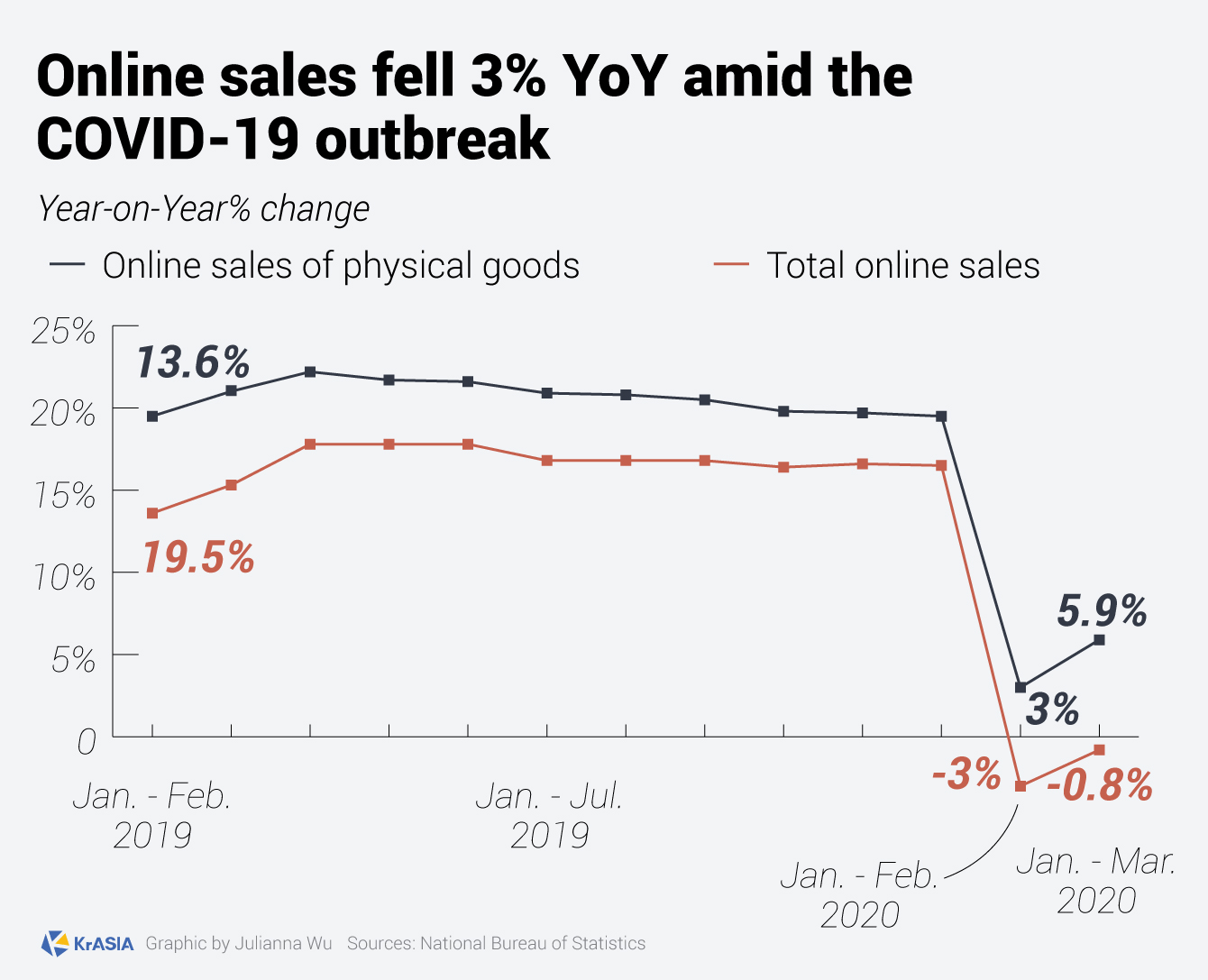The number of online orders for both physical goods and services in China saw a 21.2% increase in the first quarter of 2020, as the world’s largest e-commerce market is getting more reliant on online channels for grocery delivery, daily goods or personal protective equipment purchase, while the coronavirus pandemic forced the closure of offline shops for more than two months.
However, an increase in the transaction volume doesn’t guarantee a safe landing for the e-commerce sector as the country feels the economic impact of the public health crisis.
From January to March, China’s online retail sales totaled RMB 2.2 trillion (USD 311 billion), down 0.8% year-on-year (YoY), but an improvement from the 3% YoY drop for January and February combined, as data from the National Bureau of Statistics showed.
Online sales of physical goods increased by 5.9% to RMB 1.8 trillion (USD 254 billion) in the first quarter. Among all the physical goods sold, food and consumer goods increased by 32.7% and 10% respectively, while clothing saw a 15.1% YoY decline.

The unexpected pandemic directed demand to China’s e-commerce apps, especially fresh grocery delivery. For example, the ratio of Meituan’s users who regularly use the app for grocery or medicine delivery increased to 11% in late February from just 1.7% a month earlier.
In addition, Alibaba’s new retail supermarket brand Hema hired more than 5,000 employees from the temporarily closed cinemas, theaters, and restaurants to help ease the pressure caused by the surge in demand for fresh grocery delivery during the outbreak.
